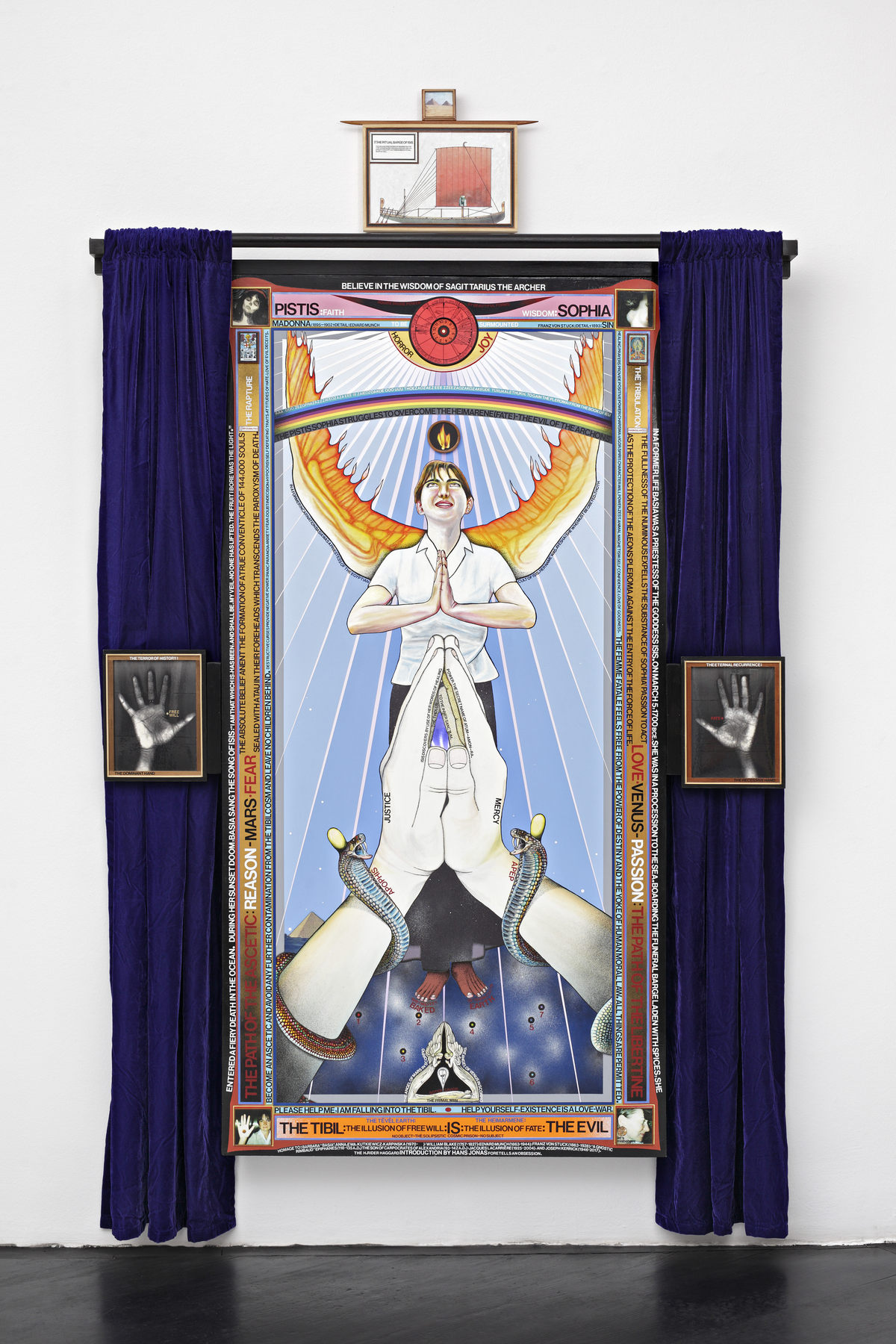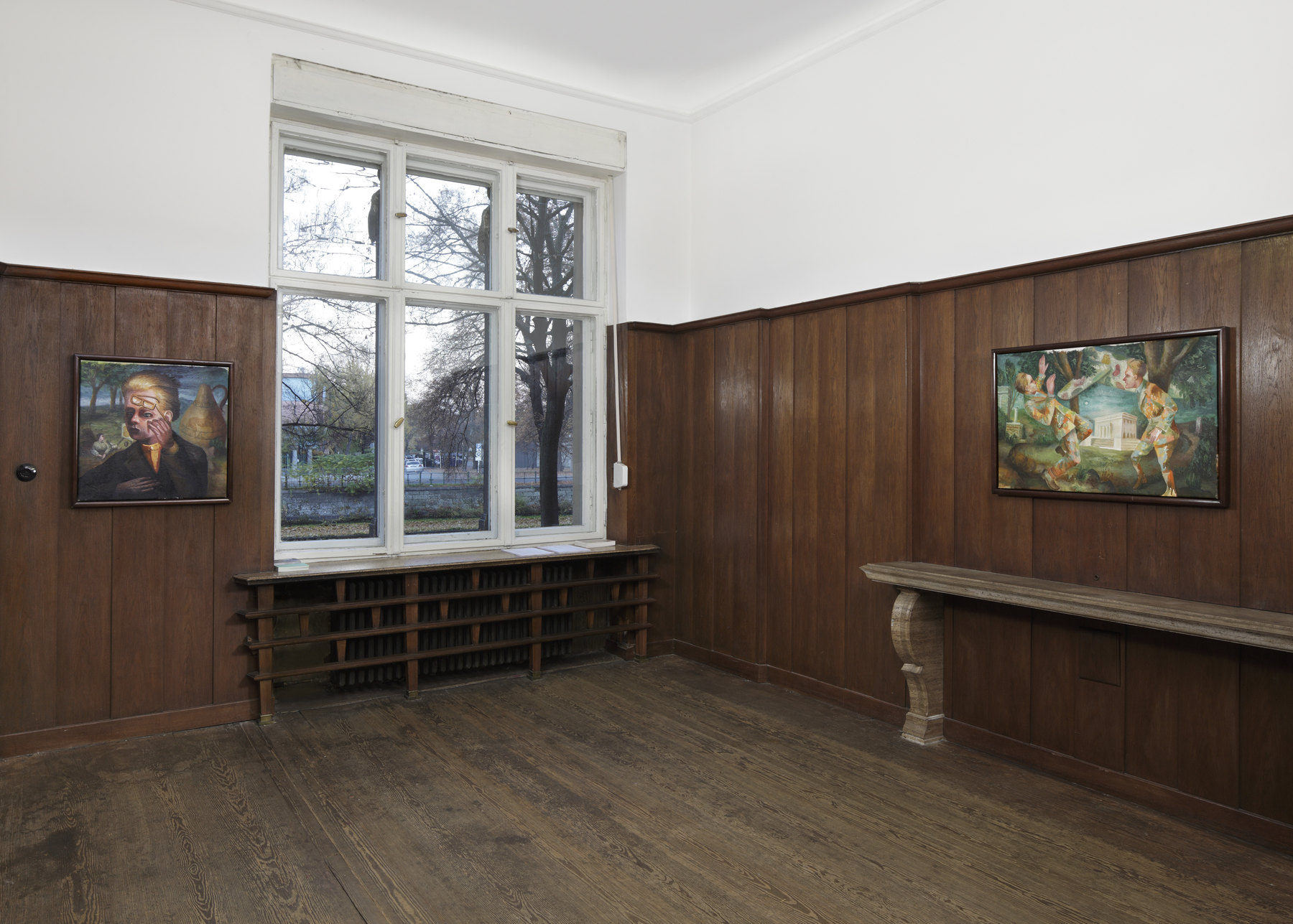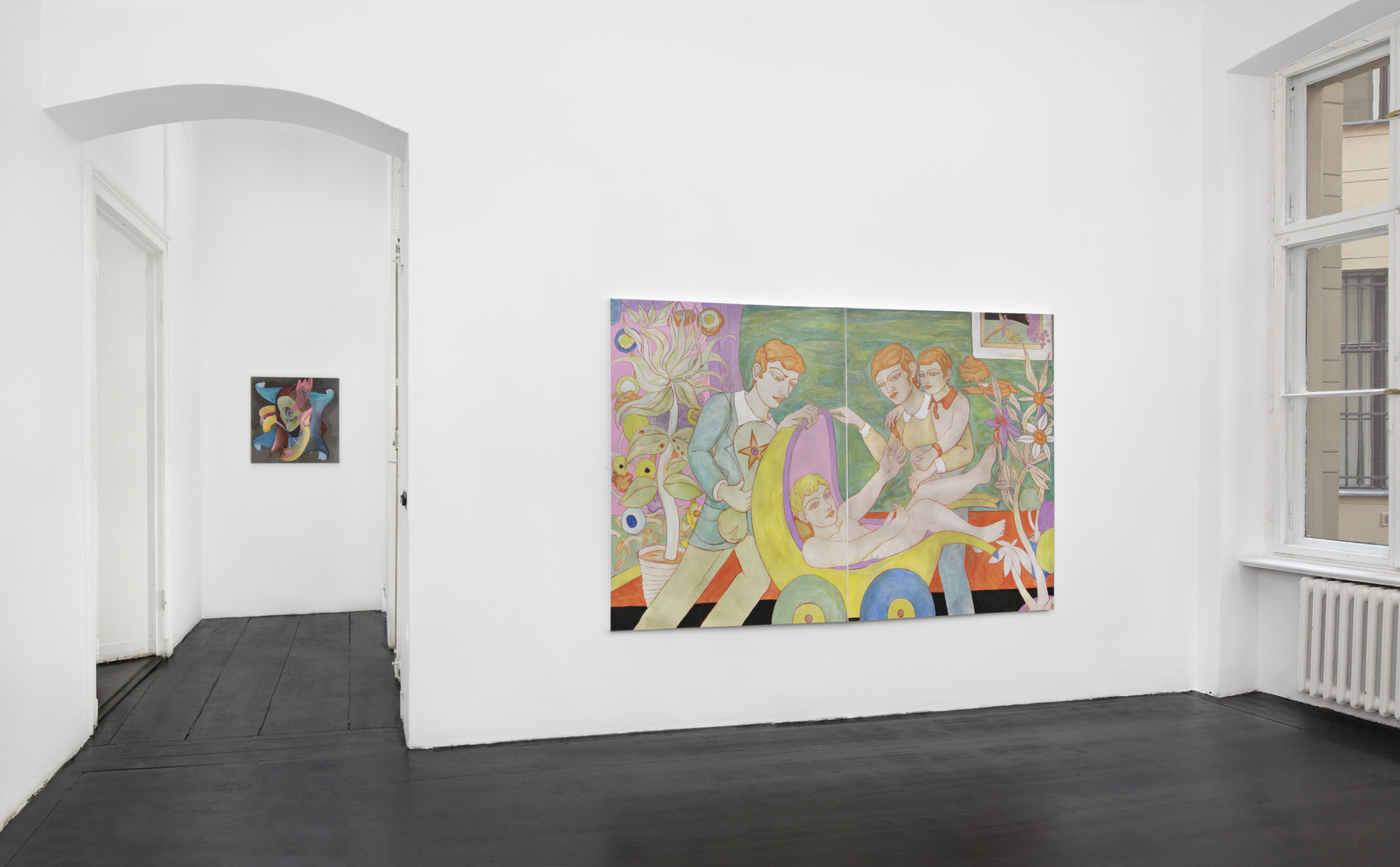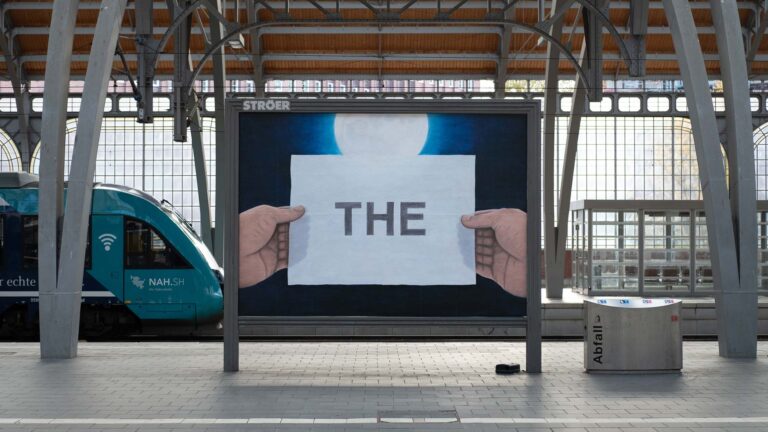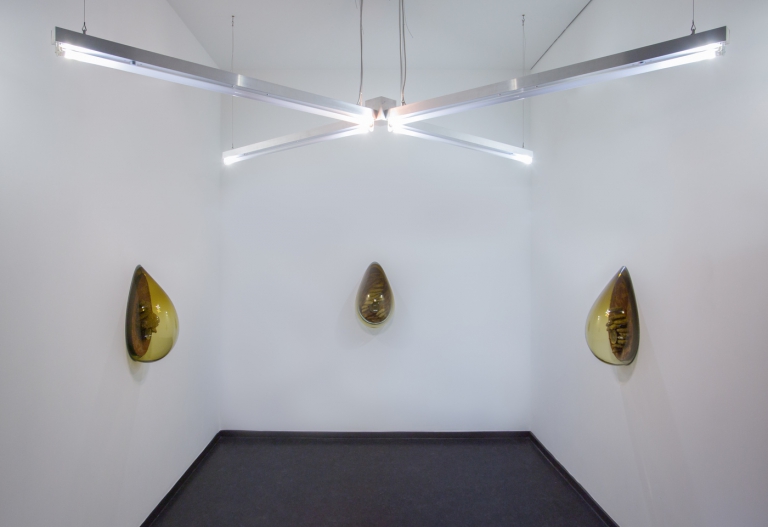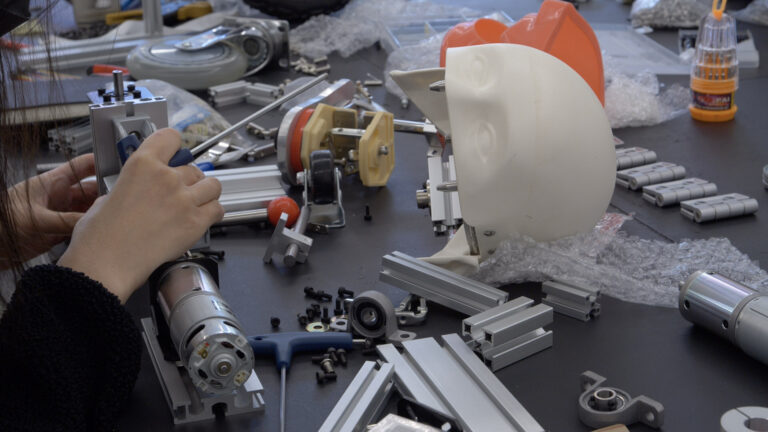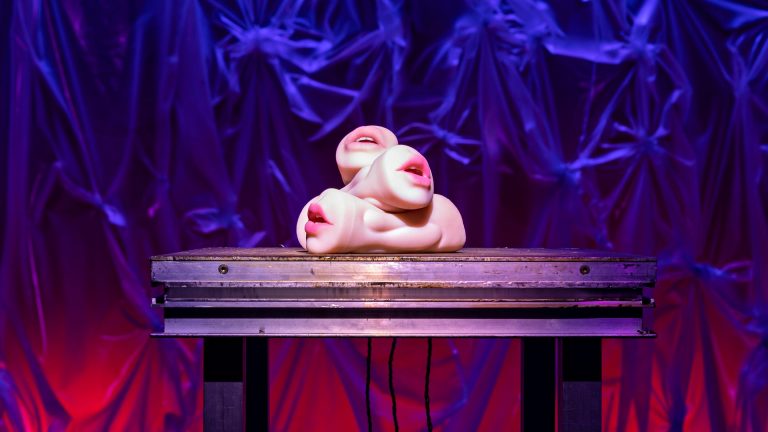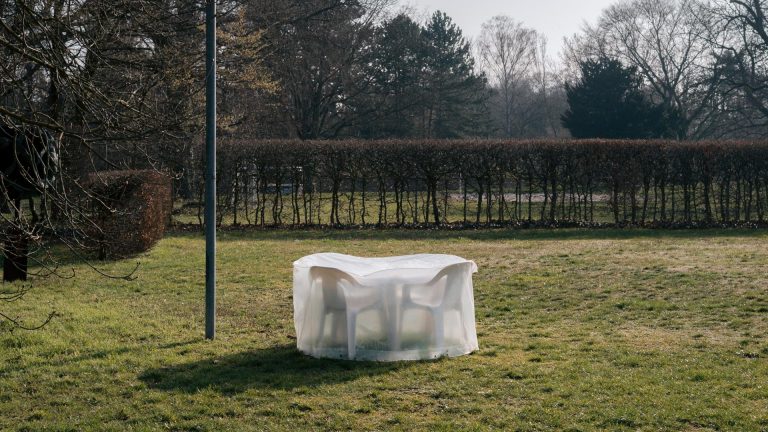Artists: Kai Althoff, Nora Berman, Steven Campbell, Donna Huddleston, Paul Laffoley, Adrian Wiszniewski
Exhibition title: Interstellar
Curated by: Michael Bracewell
Venue: Isabella Bortolozzi, Berlin, Germany
Date: November 3 – December 31, 2015
Photography: images copyright and courtesy of the artists and Isabella Bortolozzi, Berlin
This exhibition was conceived as the continuation of a group show titled ‘The Big Inexplicable Paravant Illusion’, curated by Isabella Bortolozzi and held at her gallery in the spring of 2012. ‘The Big Inexplicable Paravant Illusion’ was inspired by the history and activities of the Berlin Magic Circle – the professional guild of stage magicians – whose headquarters, archive and small private theatre were housed in the same building as the gallery.
I have long been interested in magic, while maintaining a safe distance from certain aspects of its allure. I share with Derek Jarman the belief that Marcel Duchamp was more interesting, as a magician, than Aleister Crowley – the latter having been described by one historian of the British Neo-Romantic movement as “an old drunk doing card tricks”. In recent years, likewise, my interest in Marcel Duchamp has worn rather thin; and when invited by Isabella Bortolozzi to curate a ‘second half’ to her first exhibition on magic and magicians, my thoughts flew first to Orson Welles, and then to the stage spectaculars of contemporary Las Vegas.
In English the word ‘glamour’ is distantly but directly descended from an old Scottish word for ‘magic’ or ‘enchantment’. And what is glamour if not a form of operational enchantment? I am entirely bewitched, for example, by James Dean in ‘Giant’, or John Coltrane and Johnny Hartman’s rendition of ‘Autumn Serenade’. That kind of glamour – like the pure spirit of certain forms of Russian alcohol – seems to exist solely in concentrate: shots of such heightened romanticism that those who imbibe feel the full effects immediately. Art, meanwhile, may exist as a more subtle, gradated and rarefied intoxicant – and once in the bloodstream, so to speak, its potency can actually increase with time.
In their very different ways, all of the artworks in ‘INTERSTELLAR’ seem to me to possess both immense glamour and a quality which for want of a better term we might term ‘magic realism’. Wikipedia usefully summarises ‘magic realism’ as: “literature, painting or film that, while encompassing a range of subtly different concepts, share in common an acceptance of magic in the rational world”. I say “usefully summarises” because the definition leaves open what the exact nature of such magic might be. And hopefully, this is because magic in the rational world (being rather different to the Gothic assertion of mystery and wonder in the face of increasing technology) can take many different forms.
‘INTERSTELLAR’ comprises a constellation of largely representational paintings and drawing – thus a form of realism, however exotic – which depict states, events, beings and circumstances which or whom may be either of another world to our own, or capable of traversing through or between different realities or states, and indeed, perhaps, of taking other people with them. All the Jung dudes. Also all of the work is intensely and meticulously concerned with craft.
Paul Laffoley, whom I first met at his Boston Visionary Cell in 1999, makes often large, diagrammatic paintings that deal with human, cosmic and cultural evolution – treating even pop culture, on occasion, as a conduit of developing consciousness. His work conflates future- ology and mysticism in a manner at once visionary and pedagogical. In conversation with him, I learned that he was wholly at ease with the idea of practical magic as a branch of physics.
I first saw the work of both Adrian Wiszniewski and Steven Campbell in the mid 1980s, and felt that their posed, poised, densely atmospheric, dream-like representational paintings and drawings were both highly literary – in the sense of seeming to have a narrative, perhaps allegorical – and descriptive of the postmodern era as a moment of intense cultural vertigo: reclaiming Romanticism while exploring its more perilous consequences; an adjunct, almost, to the alternating melancholy and darkling urgency of post-punk. These two Scottish artists seemed to bring a quality of inestimable importance to contemporary British art: minds wholly in tune with the times.
Nora Berman is a Californian artist whose work seems to engage with notions of primal consciousness in a time and place (contemporary Los Angeles) that is informed by the Dark Web, conspiracy theory, religious hysteria, ecstatic lifestyle cults, paranoia, neurasthenic self- help, violence and saturation media. She is an artist whose spiritual grandfathers might be Thomas Pynchon and Mike Kelley – neither of whom, as they say, stuck around, but whose vision she seems to inherit for a post-digital generation.
Donna Huddleston, an Irish Australian, makes drawings which conflate archetype and autobiography, stylistically reclaiming the ceremonial aspects of Symbolism to depict a modernity informed as much by intimations of antiquity as by science fiction. Her inscrutable female figures merge terrestrial adolescence with alien, divine or occult characteristics – their ambiguity suggesting the dialogue between an inner world and an outer. Her work shares with that of Wiszniewski, Berman and Campbell a discreet but vital element of wit.
The art of Kai Althoff both confounds and dismisses literal, ‘intellectual’ or conjectural interpretation: within his work, the fantastical appears to co-exist without question or pause alongside the familiar and the mundane. It is perhaps the closest to our opening definition of magic realism, presenting a totality of vision that is as immersive as it is mysterious, and as precise yet elusive in its logic as a dream.
Finally, ‘INTERSTELLAR’ is a title borrowed from Christopher Nolan’s film of 2014, starring Matthew McConaughey, Michael Caine and Anne Hathaway. The notion of travel between remote yet strangely neighbouring worlds and dimensions, presented en route with the existential problems posed by maths to philosophy, seemed to me to suit the spirit and temper, individually and collectively, of the beautiful artworks gathered together in this exhibition.
Michael Bracewell
West Sussex, October 2015.
Nora Berman, Kiss me in the eye kiss kiss (Queen Hiss), 2015
Paul Laffoley, Pistis Sophia, 2004-2006
Donna Huddleston, The Warriors, 2015
Nora Berman, Are you here I am (fugue state (orb)), 2015

